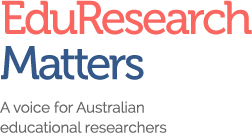The first school term for 2025 is ramping up, and many teachers are returning to complex and tiring – if extremely important and fulfilling work. A key part of this work is making decisions: from long-term, considered decisions, to those which occur ‘in the moment’, consciously or subconsciously during classroom interactions. Indeed, there’s a common understanding that teachers make a lot of decisions. In the 1960s, sociologist Philip W. Jackson estimated the number to be about 1500 in a single day.
But while Jackson was interested in documenting ‘life in classrooms’, he was not really focused on the question of how decision making is experienced by teachers, or how it might be a factor in understanding concerning recent reports of work overload and intensification. Indeed, most scholarly work on teacher decision making so far has positioned it as part of what makes teaching effective; as something that changes over time with growth in professional knowledge; and/or as a resource – a source of professional control and autonomy.
In our research, we sought to ask the question of whether decision making might be part of the subjective intensity of teaching work. To do this we used an app developed for the Teachers and Time Poverty project. The app asked teachers to report on the number of decisions made within a time-sampled 30-minute period, and the stakes and time pressure associated with these decisions. In a recent chapter for a book two of us edited on time poverty, we present these decision making data from a trial of the app with 138 teachers reporting on 280 30-minute timeslots.
How many decisions?
In our trial, most teacher respondents (189/68%) estimated that they had made 30 decisions or less within their assigned 30-minute period (with the most common response being 11-20 decisions, and the average being 21-30). This is somewhat low, if we consider Jackson’s estimation of 1500 a day, which would equate to at least 130 decisions in half an hour. This result may be because decisions that become automatic are harder to recall, and/or because stressful or complex situations may make it harder to recall the process of making a decision. Importantly, Jackson was observing teachers – not doing the teaching himself and trying to self-report his decision making.
How pressured were these decisions?
Questions about pressure to make decisions quickly, or make high stakes decisions, were measured using a scale from 1 to 7, where 1 was ‘not at all’ and 7 was ‘to a great extent’. In terms of pressure to make decisions quickly, most responses ranged from 4-7 out of 7. Leaders reported more pressure (83% in the range of 4-7) than teachers (71%).
In terms of pressure to make high-stakes decisions, responses were more evenly distributed. Leaders tended to report greater pressure here (67% in the range of 4-7), compared to teachers (48%).
These findings around decision making pressure suggest that it’s not just the number of decisions, but the nature of those decisions that contribute to the teachers’ and school leaders’ experiences of working time.
Do teachers have enough time?
A further question we consider in our chapter is whether participants felt they had enough time to complete everything they intended to do within the 30 minutes they were reporting upon. Responses from over half the group (58%) tended toward ‘not at all’, with 19% selecting 3, 23% selecting 2, and 16% selecting 1 out of 7.
Is this unusual?
We also asked teachers how typical their day was overall. The majority of responses confirmed that theirs had been more or less a typical day, with a median response of 5 on the 7-point scale. This indicates that not having enough time to do all they need to do, and needing to make decisions quickly – some of which are high-stakes – is a commonplace experience in teaching. Teachers also reported undertaking a very wide range of activities during their allocated 30-minute time slots, including face-to-face teaching, preparation and administration, student wellbeing responsibilities, and other activities outside the classroom – and often more than one of these categories within the same 30-minute block. We wonder if this ‘typical’ kind of variability, including as it relates to decision making, may be a further dimension of the intensity of teachers’ working time.
Decision making and time poverty
Our work sees decision making not in terms of how teaching works and how to make it work better, but instead, as part of how it is experienced: a window into understanding the texture of teachers’ time at work. The data we gathered indicate a clear sense of participants feeling rushed and not having ‘enough’ time, with decision making experienced as consistently, if not evenly pressurised (both in time and stakes), and conducted across a wide range of activities.
Our analysis therefore contributes to our broader argument in the Teachers and Time Poverty project that time poverty for teachers is not simply about a lack of available ‘clock time’, but rather, how the nature of the time teachers currently spend at work is constituted, and the considerable variability of this.
Complexity
This highlights the complexity of what teachers do: the wide range of tasks they undertake, the kinds of decision making these demand, and the ‘typical’ unevenness and lack of predictability that require teachers to make these decisions. We think this might be a key part of what makes teaching such an exhausting (albeit worthwhile and fulfilling) job. It also points to why ‘quick fixes’ like a little less playground duty, or less after school meetings cannot, on their own, solve the enduring problem of teacher time poverty.

Meghan Stacey is associate professor and ARC DECRA Fellow in the UNSW School of Education, where she researches the critical policy sociology of teachers’ work. Sue Creagh has most recently worked as a senior research fellow at QUT. Sue’s research interests are in education policy, national testing, and English as an Additional Language/TESOL. Nicole Mockler is professor of education at the University of Sydney. Her research interests are in education policy and politics, professional learning and curriculum and pedagogy. Anna Hogan is associate professor and ARC DECRA research fellow in the School of Teacher Education & Leadership at QUT. Anna’s research interests are in education policy and practice, and in particular the privatisation and commercialisation of schooling. Greg Thompson is professor in the School of Teacher Education & Leadership at QUT. His research focuses on the philosophy of education and educational theory.



















